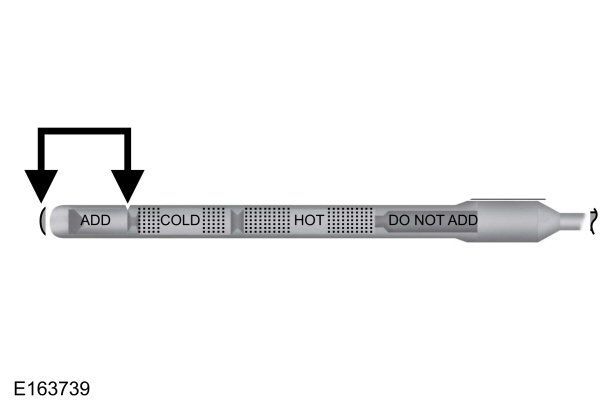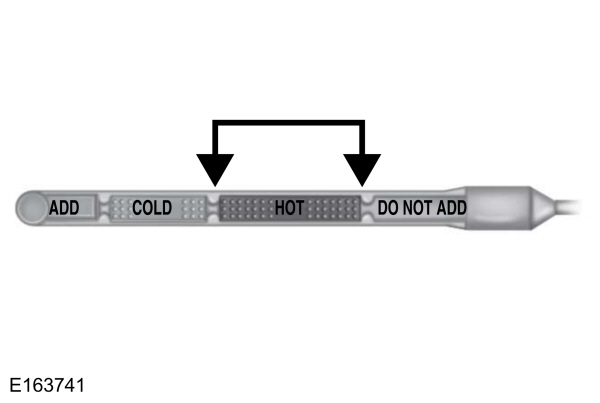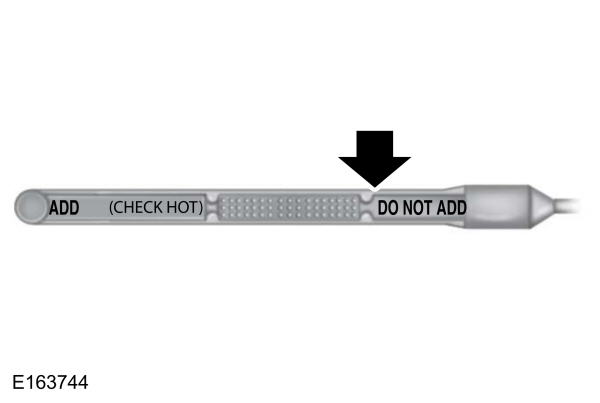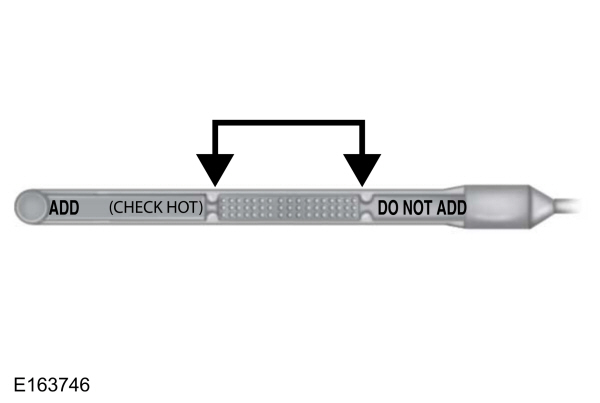This view of the Owner's Manual contains the very latest information, which may vary slightly from the printed Owner's Manual originally provided with your vehicle. It may also describe content that is not on or operates differently on your vehicle. Please consider the Owner's Manual originally provided with your vehicle as the primary source of information for your vehicle.

The information contained in this publication was correct at the time of release.In the interest of continuous development, we reserve the right to change specifications, design or equipment at any time without notice or obligation.No part of this publication may be reproduced, transmitted, stored in a retrieval system or translated into any language in any form by any means without our written permission.Errors and omissions excepted.
Copyright © 2024 Ford Motor Company
Automatic Transmission Fluid Check








Have an authorized dealer check and change the transmission fluid and filter at the correct service interval. See
Scheduled Maintenance.
Do not use supplemental transmission fluid additives, treatments or cleaning agents. The use of these materials may affect transmission operation and result in damage to internal transmission components. See
Scheduled Maintenance.
The automatic transmission does not have a transmission fluid dipstick.
Note:
Only applies to 6R100 transmission.
Refer to your scheduled maintenance information for scheduled intervals for fluid checks and changes.Your transmission does not consume fluid.However, if the transmission slips, slowly shifts or if you notice a sign of leaking fluid, contact an authorized dealer.
Checking Automatic Transmission Fluid (If Equipped)
For scheduled intervals of the fluid checks and changes, See
Scheduled Maintenance.
Your transmission does not consume fluid. However, the fluid level should be checked if the transmission is not working properly, i.e., if the transmission slips or shifts slowly or if you notice some sign of fluid leakage.
Automatic transmission fluid expands when warmed. To obtain an accurate fluid check, drive the vehicle until it is at normal operating temperature (approximately
19 mi (30 km)). Verify that the transmission fluid temperature gauge, located on the instrument cluster, is within normal range.
- Drive the vehicle 19 mi (30 km) until it reaches normal operating temperature.
- Park the vehicle on a level surface and engage the parking brake.
- With the engine running, parking brake engaged and your foot on the brake pedal, move the gearshift lever through all of the gear ranges. Allow sufficient time for each gear to engage.
- Latch the gearshift lever in park (P) and leave the engine running.
- Remove the dipstick, wiping it clean with a clean, dry lint free rag. If necessary, refer to the Under Hood Overview in this chapter for the location of the dipstick.
- Install the dipstick making sure it is fully seated in the filler tube.
- Remove the dipstick and inspect the fluid level. The fluid should be in the designated area for normal operating temperature or ambient temperature.
Low Fluid Level
Type A

Type B

Do not drive the vehicle if there is no indication of fluid on the dipstick and the ambient temperature is above
50 °F (10 °C).
Correct Fluid Level
Type A

Type B

For vehicles equipped with 5-speed transmissions, check the fluid at the normal operating temperature of
151 °F (66 °C) to
170 °F (77 °C) on a level surface. For vehicles equipped with 6-speed transmissions, check the fluid at the normal operating temperature of 200°F (93°C) to 210°F (99°C) on a level surface. The normal operating temperature can be reached after approximately
19 mi (30 km).
High Fluid Level
Type A

Type B

Fluid levels above the safe range may result in transmission failure. An overfill condition of transmission fluid may cause shift and engagement concerns, and possible damage.
High fluid levels can be caused by an overheating condition.
Adjusting Automatic Transmission Fluid Levels
Note:
Use of a non-approved automatic transmission fluid may cause internal transmission component damage.
Before adding any fluid, make sure the correct type is used. The type of fluid used is normally indicated on:
- the dipstick handle.
- See Capacities and Specifications.
If necessary, add fluid in
8 fl oz (250 ml) increments through the filler tube until the level is correct.
Type A

Type B

If an overfill occurs, excess fluid should be removed by a qualified technician.
Note:
An overfill condition of transmission fluid may cause shift and engagement concerns, and possible damage.
Do not use supplemental transmission fluid additives, treatments or cleaning agents. The use of these materials may affect transmission operation and result in damage to internal transmission components.
Thank You For Your Feedback
